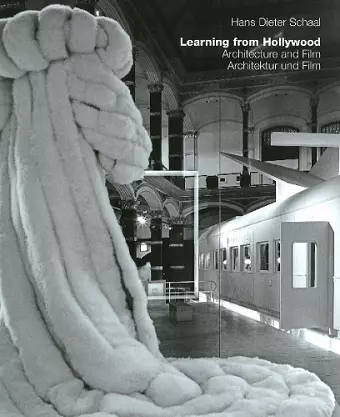Learning from Hollywood
Architecture and Film
Format:Hardback
Publisher:Edition Axel Menges
Published:9th Oct '09
Currently unavailable, and unfortunately no date known when it will be back

Text in English & German. Hollywood is not only the secret world capital of dreams and the fictions of the subconscious, but also the capital of architecture. Hollywood is the Rome and the Versailles of the 20th and 21st centuries. A new awareness of space spanning the entire world was created here. These backgrounds, stage sets and filmic spaces are indelibly fixed in every spectator's mind. It may be in the cinema that the first time you saw the desert, the Rocky Mountain cliffs, Greenland's glacier mountains and California's sandy beaches. You saw here the Western saloons and Al Capone's dark rooms, the poor Mexicans' huts and the Kennedys' penthouse apartments; you saw here also the jazz clubs of New Orleans and the dream houses in Los Angeles. There was and is scarcely a corner of the earth that the Hollywood film has not dreamed its way into. Every cinema-goer in the world sees the same plot, the same images, the same faces, the same rooms, buildings, towns and streets. Film's power to bring people together can scarcely be overestimated. Film architecture is world architecture. All other architecture -- your own town, your own street, your own house, your own flat -- remains small and parochial in the face of this, restricted to affecting a very tiny sphere. The architecture of the future will develop in the field of tension between these two aspects -- small and parochial, large and spanning the entire world. The real architecture of houses and cities could be enriched in its language by including film architecture, and real architecture could be jolted out of its banality by including the studio world. Films and their images can teach us that the architecture of houses, streets and towns is not just a problem of order, function and economic viability, but that psychology, atmosphere and images are being built here as well.
Film and architecture are both visual forms, so its great that someone has now thought to tie them together, on the premise that each will aid a better understanding of the other. Schaals clever and linear approach allows the reader to appreciate his observations so that, by the books end, I too had become a willing convert. Screentrade Nov/Dec 2009
ISBN: 9783936681345
Dimensions: unknown
Weight: 890g
128 pages